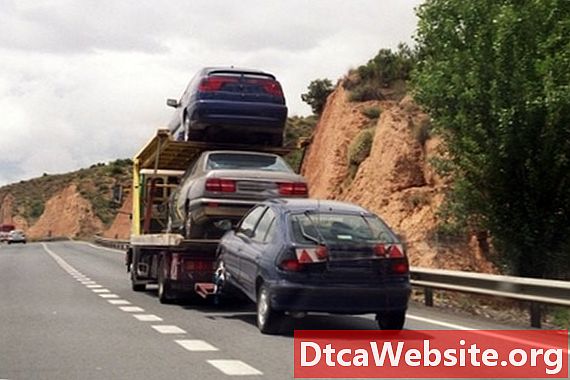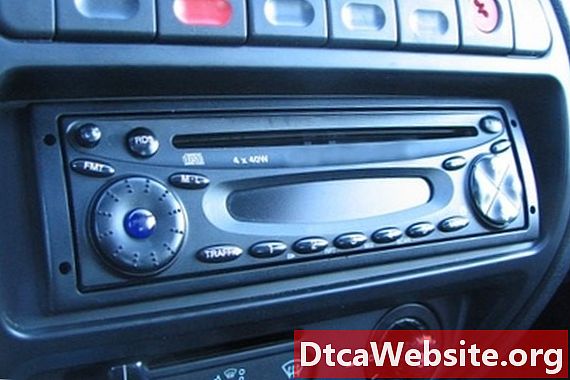
Contenu

A brake system transmits force from a drivers foot to the cars brakes. The brakes then transmit the force to the tires and road, where the friction slows and stops the vehicle. Hydraulic and power brake systems use the principles of hydraulics and hydraulic fluids. Engaging the brake pedal or lever in a mechanical braking system pulls a cable connected to the brake shoe assembly and initiates contact with the brake drum or disc. The main parts of automobile braking systems include the pedal, drum and disc brakes, a brake booster and push rod, the master cylinder, valves and lines, and the emergency and anti-lock brakes.
Pedal
The driver of a vehicle steps on the brake pedal to stop the vehicle. The pressing of the pedal moves a piston located in the master cylinder.
Master Cylinder
The master cylinder is located directly in front of the drivers seat on the firewall in the engine. A master cylinder typically houses two separate master cylinders. Each master cylinder handles a set of wheels. The master cylinder controls the hydraulic pressure of the hydraulic fluids. The hydraulic tubing lines connect the master cylinder to the brake cylinders. When the pedal is pressed, two internal pistons move and a valve opens in the master cylinder. The hydraulic fluid must pass through the valve, a chamber and a series of tubes and hoses to get to the brake cylinders.
Brake Booster
Mounted on the firewall behind the master cylinder in a power braking system is the brake booster. The booster is a shell divided by a rubber diaphragm into two chambers. Stepping on the brake closes a valve in the diaphragm and opens another valve, allowing air into the chamber on the pedal side. By using an intake stroke of the engine to create this vacuum, the booster amplifies the applied foot pressure so that the amount of pressure needed to stop is minimal.
Drum Brakes
Drum brakes are located on the rear wheels. When the brakes are applied, the pressurized fluid forces its way into the wheel cylinder of the drum brakes. This pushes the brake shoes into contact with the inside of the brake drum and slows down the vehicle. A pushrod transfers motion from one shoe to the other.
Disc Brakes
Most vehicles have disc brakes only on the front wheels, though newer vehicles may have disc brakes on all four wheels. With disc brakes, the fluid from the master cylinder forces into a caliper where it presses against a piston. The piston squeezes two brake pads on a disc rotor attached to the wheel. This forces the wheel to slow down and stop.
Emergency Brake
The emergency or parking brake is a fully mechanical system that controls the rear brakes. Steel cables connect the parking brake to either a hand lever or a foot pedal and bypass the hydraulic system.
Anti-Lock
If wheels lock up due to panic braking, steering control is lost. Anti-lock brakes detect locked wheels and rapidly pump the brakes. A computer with a series of sensors monitors the speed of the wheels and, if necessary, signals the brakes to be pulsed.
Proportioning Valve
Vehicles with disc brakes in the front and drum brakes in the back have a proportioning valve. During a hard brake, the valve reduces some of the pressure going to the rear brakes so that all four brakes operate evenly.


